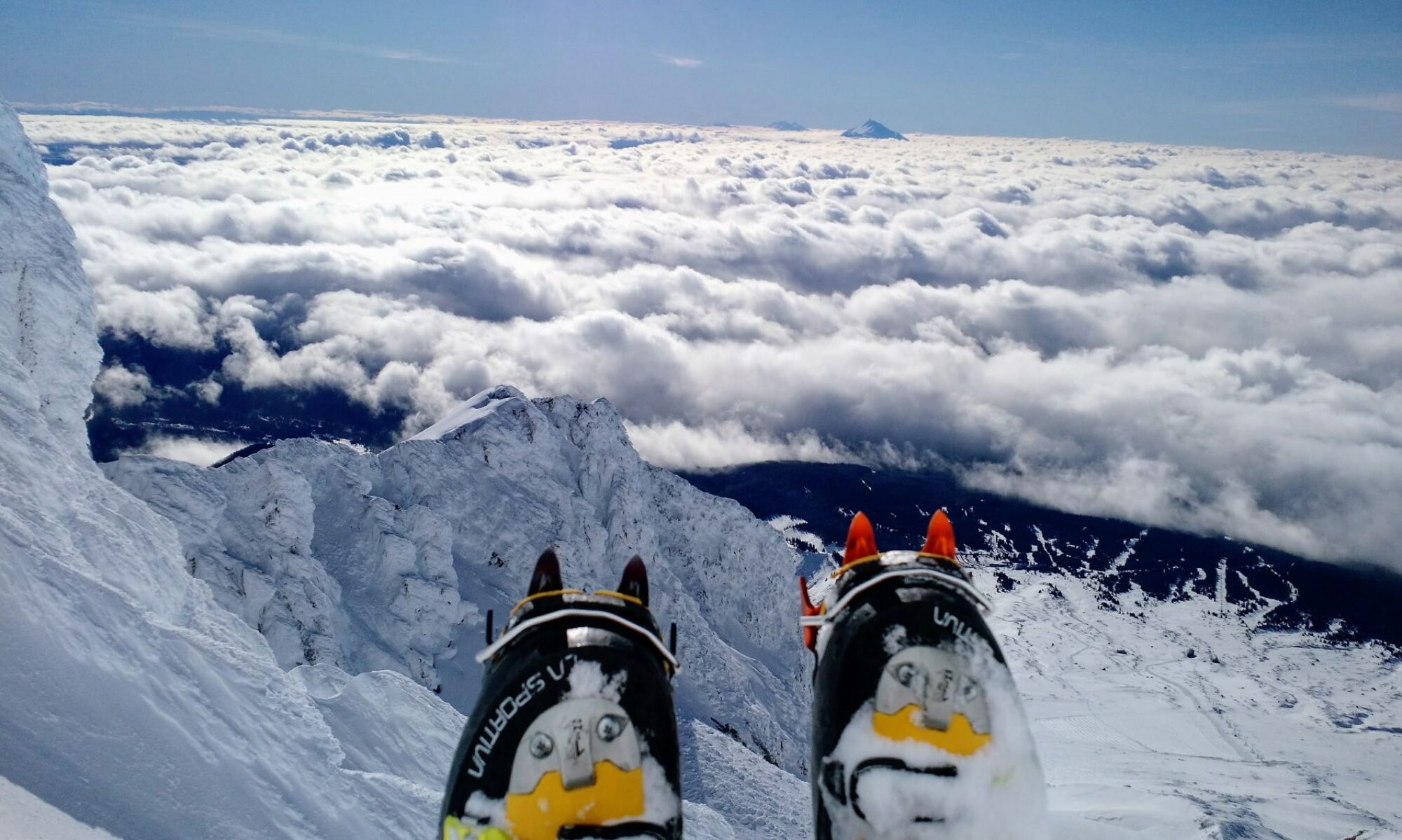[From the April 2012 Mazama Bulletin]
Ingalls Peak, various routes (7662 ft)
Ingalls Peak, or perhaps Ingalls Peaks because there are three separate peaks, is located directly west of Mt. Stuart and is accessed through Cle Elum and I-90. It is possible to climb Ingalls car-to-car in a long day, but why do that when an overnight near beautiful Lake Ingalls is possible (mountain goats up close included)? Most climbers head straight to the classic South Ridge route of the 7662 ft. North Peak where very good rock and moderate 5.6 climbing awaits eager AR graduates. Not quite as popular is the East Ridge route, also on the North Peak, which is low 5th class except for a short section of 5.7 near the summit. From Ingalls’ summit there is a jaw-dropping view of the West Ridge route of Mt. Stuart, which will make a climber dream of even bigger adventures.
 |
| Castle and Pinnacle – Sojo Hendrix Photo |
The Tatoosh, various peaks and routes
Along Rainier National Park’s southern boundary lies an east-west subrange called The Tatoosh. This range extends from Tatoosh Peak itself westward to Eagle and Chutla Peaks. The summits of this range are very popular because they are easily accessible, require moderate technical skills and, when the weather is nice, provide fabulous views of Mt. Rainier. While Tatoosh Peak and Stevens Peak on the east end of the range are seldom climbed, Unicorn Peak, The Castle, and Pinnacle Peak are very popular. Slightly less popular are Boundary, Lane, Plummer, Wahpenayo, Chutla, and Eagle. Maintained trails lead close to the tops of some of these peaks while the rest have 3rd and 4th class scramble routes. It is possible in a two day backcountry weekend to climb all the peaks from Unicorn to Eagle. If you desire more excitement than a scramble, Unicorn Peak has short routes on the summit block that are rated up to 5.6, as does The Castle, and the east ridge of Pinnacle is a long single pitch 5.4 rock climb. While Lane Peak’s main route is a scramble, there are several steep multi-pitch snow couloirs on the north side of the peak that can be climbed in winter or early season. The best known of these routes is called The Zipper. All in all, The Tatoosh are hard to beat for their alpine environment, mixed snow and rock routes, and gorgeous mountain scenery.
Mt Hood, various routes (11,240 ft)
The route choices on Mt. Hood are numerous and this year climb leaders will be offering seven routes up several sides of the mountain, including the standard Old Chute, the more difficult Wy’east route and the Reid Glacier. No matter which route you choose, you will find technical challenges along the way to the summit. If you want to avoid the crowds, look for a weekday climb of the peak.
Mt. Adams, South Side or Mazama Glacier (12,276 ft)
The South Side route on Mt. Adams is a high, gentle climb, great for beginning climbers who want an overnight trip with fewer people and a more wilderness feel than Mt. Hood. You will encounter little technical difficulty on this South Side route, but you will get to try your hand at camping around 9,000 ft. and using crampons and an ice axe. The Mazama Glacier route offers a bit more of a technical challenge and you may encounter snow slopes of up to 35-40 degrees, along with open crevasses.
Del Campo Peak, SW Buttress (6610 ft)
Del Campo Peak is among the peaks in the Monte Cristo range. It has a moderate approach over snow in early season, or on heather and rock in the summer. The summit pinnacle is a 3rd class scramble. The approach is through a historic mining area and many climbers choose to camp at Foggy Lake below Del Campo. Gothic Peak is often climbed on the same trip.
Eldorado Peak, Eldorado Glacier (8868 ft.)
Eldorado Peak is located on the edge of an expansive ice shelf in the North Cascades. The views from the summit are among the best in the North Cascades National Park, from Forbidden Peak, Buckner and Sahale Peaks to the summits of the Ptarmigan Traverse. The climb itself is a straightforward glacier climb with a knife-edged ridge leading to the dramatic summit. The approach is a typical North Cascades steep and strenuous hike, but well worth the effort.



